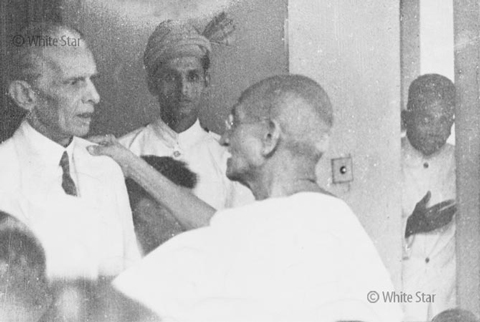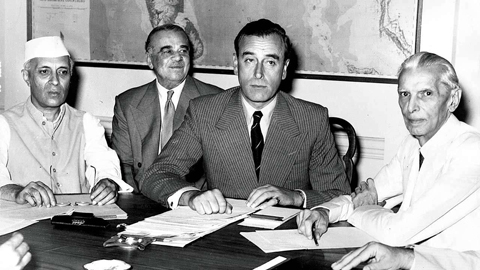Perspectives on Partition
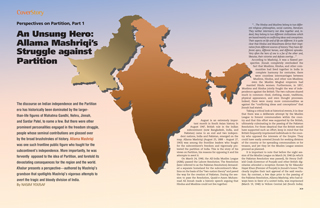
Perspectives on Partition, Part 1
An Unsung Hero: Allama Mashriqi’s Struggle against Partition
The discourse on Indian independence and the Partition era has historically been dominated by the larger-than-life figures of Mahatma Gandhi, Nehru, Jinnah, and Sardar Patel, to name a few. But there were other prominent personalities engaged in the freedom struggle, people whose seminal contributions are glossed over by the broad brushstrokes of history. Allama Mashriqi was one such frontline public figure who fought for the subcontinent’s independence. More importantly, he was fervently opposed to the idea of Partition, and foretold its devastating consequences for the region and the world. Khabar presents a perspective—authored by Mashriqi’s grandson that spotlights Mashriqi’s vigorous attempts to avert the tragic and bloody division of India.
By NASIM YOUSAF
August is an extremely important month in South Asian history. In August 1947, British rule in the Indian subcontinent (now Bangladesh, India, and Pakistan) came to an end and two independent nations, India and Pakistan, emerged on the map. Allama Mashriqi (August 25, 1888 – August 27, 1963) was among the frontline leaders who fought for the subcontinent’s freedom and vigorously protested the partition of India. This is the story of his views on Partition, his reasons for opposing it and his attempts to avert it.
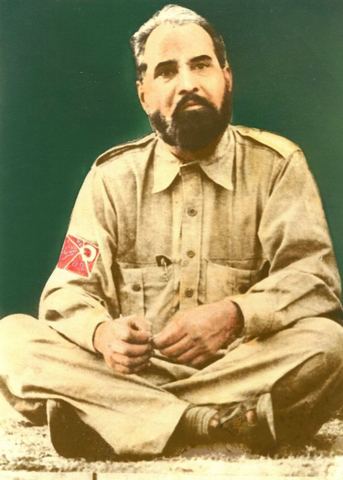
(Right) Allama Mashriqi (Photo: Courtesy Nasim Yousaf)
On March 24, 1940, the All-India Muslim League (AIML) passed the Lahore Resolution. The Resolution (later referred to as the Pakistan Resolution) demanded a separate homeland for the subcontinent’s Muslims on the basis of the “two-nation theory” and paved the way for the creation of Pakistan. During the session to pass the Resolution, Quaid-e-Azam Muhammad Ali Jinnah made a historic speech arguing that Hindus and Muslims could not live together:
“…The Hindus and Muslims belong to two different religious philosophies, social customs, literature. They neither intermarry nor dine together and, indeed, they belong to two different civilizations which are based mainly on conflicting ideas and conceptions. Their aspects on life and of life are different. It is quite clear that Hindus and Musalmans derive their inspiration from different sources of history. They have different epics, different heroes, and different episodes. Very often the hero of one is a foe of the other and, likewise, their victories and defeats overlap…”
According to Mashriqi, it was a flawed perspective. Jinnah completely overlooked the fact that Muslims, Hindus, and other communities had lived together in India in complete harmony for centuries; there were countless intermarriages between Muslims, Hindus, and other non-Muslims; even the Muslim Mughal emperors had married Hindu women. Furthermore, in 1857, Muslims and Hindus jointly fought the war of independence against the British. The two cultures shared much in common—food, clothing, music, traditions, physical appearance, and even thought processes. Indeed, there were many more commonalities as against the “conflicting ideas and conceptions” that Jinnah had stated.
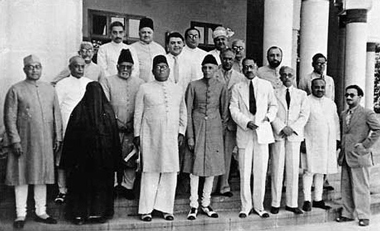
(Left) The All-India Muslim League, whose ideology and intentions Mashriqi was vigorously opposed to. (Photo: Wikipedia)
Taking a critical look at historical events, it is clear that there was a deliberate attempt by the Muslim League to foment communalism within the country and that this effort was supported by the British, ultimately culminating in the passing of the Pakistan Resolution. For those skeptical that the British would have supported such an effort, keep in mind that the British frequently imprisoned individuals in the country who opposed the interests of the Empire. They could have easily arrested Jinnah for seeking division of the country or for spreading communalism or for treason, and yet they let the Muslim League session proceed as planned.
It is important to note that before the night session of the Muslim League on March 24, 1940 (in which the Pakistan Resolution was passed), Sir Henry Duffield Craik (Governor of Punjab) and other British dignitaries attended a reception thrown by Sir Sikander Hayat Khan (Premier of Punjab) in Jinnah’s honor. This clearly implies their tacit approval of the said resolution. By contrast, a few days prior to the passing of the Pakistan Resolution, Allama Mashriqi, who had always been in favor of a united India, was imprisoned (March 19, 1940) in Vellore Central Jail (South India). He remained in prison without a trial as the Government could not formulate a case against him.
Why was Mashriqi so opposed to Partition? Mashriqi formulated his assessment based on a deep understanding of Indian politics developed over the course of decades of experience in public life. Some of his reasons were as follows:
(1) Muslims and Hindus had lived together in India peacefully for centuries and there was no reason they couldn’t do so in an independent, liberated nation.
(2) He felt that the two-nation theory, the Pakistan Resolution, and the partition of India were all the “brainchild” of the British and ultimately served their interests; it would be easier for the British to maintain control of the region if Muslims and Hindus stayed divided in two separate countries. And if either country became a threat, they could be pitted against one another.
(3) Mashriqi believed that Partition would lead to devastating consequences for the region, including wholesale manslaughter, unspeakable human tragedies, and misery amongst
both Muslims and Hindus.
(4) He feared that the
amputation of the country along religious lines would breed hostility and promote fundamentalism and
extremism in both countries; he was also concerned that minorities would be mistreated.
(5) Dividing a country (and Muslims) into three parts, with two of its wings separated by over 1,000 miles, made no sense to him. And he felt that the migration of all Muslims to Pakistan was completely impractical. His argument was that Muslim majority areas were already under Muslim rule, so if any Muslims wanted to move to these areas, they were free to do so without having to divide the country. He believed that the Muslim League’s leaders were power hungry and were misleading Muslims in order to bolster their own power by serving the British agenda.
Following the adoption of the Pakistan Resolution, the British rulers gave the Muslim League a free hand to continue to sow division amongst Muslims and Hindus. In order to promote the idea of a separate homeland, the AIML used every conceivable method to sway the Muslim masses, including exploiting Muslims’ religious sentiments by using slogans such as “Pakistan ka mutlab kiya? La ilaha illaallah” and telling them that Islam was in danger in a united India.
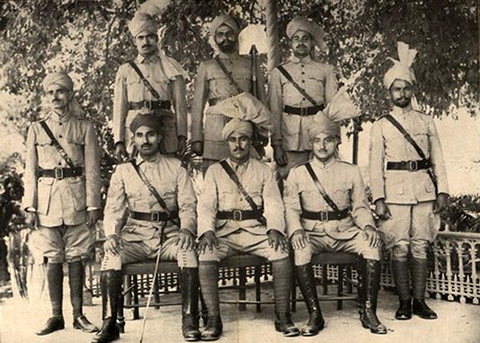
Some of the Khaksars in uniform. The Khaksar tehreek was a movement founded by Mashriqi, mainly to fight against the partition of India. (Photo:Wikipedia)
In 1942, after Mashriqi was released from prison—restrictions on his movements remained in force—he was shocked to see the way communalism and the idea of a separate Muslim homeland was being spread amongst the naive Muslim masses. Mashriqi was also shaken that the All-India Muslim League and Indian National Congress (including Mahatma Gandhi) were not willing to resolve their issues. Mashriqi feared that the leaders of both political parties were engaged in a selfish power struggle while falsely claiming to fight for their communities’ rights. Despite this, Mashriqi tried his best to unite both parties. On April 11, 1942, Mashriqi wrote a telegraphic message to the Presidents of the Muslim League, Congress, and the Hindu Mahasabha asking them to join hands and pledging to achieve “…complete independence for India from the British Government within six months…”. He offered them the support of “… half a million Khaksars”. Thereafter, Mashriqi pushed for a Jinnah-Gandhi meeting. His efforts bore fruit and Gandhi, in a telegram to Mashriqi dated May 15, 1944, confirmed “…I will be ready to discuss [with Jinnah] the question of Hindu-Muslim understanding…” The meeting between Jinnah and Gandhi took place but ended inconclusively. Mashriqi had demonstrated through both words and actions that he was willing to do whatever it took to bring about freedom with unity; sadly, Jinnah, Gandhi, and the Congress leaders could not reach a consensus.
From Mashriqi’s perspective—based on his own observations and the Khaksar meetings with Gandhi and other leaders—these leaders were not truly serious about keeping the country united. The way he saw it, they never managed to put together any concrete plan to bring about a united independence and protect the rights of all communities. Meanwhile, in 1945, Mashriqi led an effort to put together The Constitution of Free India, 1946 A.C., also known as the Mashriqi Constitution or Khaksar Constitution in order to prevent the partition of India. The document was the result of a major effort by Mashriqi to incorporate the perspectives of many different political parties and communities, as well as the viewpoint of eminent personalities and intellectuals from various disciplines including politics, finance, administration, and law. The Constitution accommodated the rights of all—Muslims, Hindus, scheduled castes, Sikhs, Jains, Parsees, Buddhists, Jews, and Christians. An excerpt from Mashriqi’s address, delivered at the University Institute Hall, Calcutta on October 21, 1945, entitled “Where Leaders Fail: A Dispassionate Dissection of Indian Politics from a Non-Party Point of View”, reads thus:
“We addressed almost every important element of India's national life, requesting it to send its declaration of interests so that in case the interests did not clash with those of other parties in the country they might be incorporated in the body of the Constitution 'as far as possible, feasible and consistent with the interests of other parties.' We addressed more or less 75 parties and over three hundred million people in the country accepted our invitation through their accredited leaders.”
By December 1945, 50,000 copies of the Constitution had been distributed in India, including copies to leaders such as Jinnah and Gandhi, foreign missions, and the Viceroy of India. Mashriqi’s massive effort went unheeded. The leaders refused to support his Constitution; worse yet, they neither suggested any amendments nor developed any version of their own. To Mashriqi, their refusal to support the Constitution was yet another signal that their true intentions were not to create a united India. Ironically, some sections of the Khaksar Constitution were included in the Indian Constitution after Partition, a fact that underscores the validity of Mashriqi’s dismissed document.
Having exhausted all other avenues, in March 1947, Mashriqi made a last ditch effort to keep India united. He ordered the assembly of 300,000 Khaksars in Delhi on June 30, 1947, to overturn British rule. The Khaksars also simultaneously intensified their activities to mobilize the public for a revolt by distributing flyers, delivering speeches, reaching out to Muslims, Hindus, and other communities, and conducting parades. Many Khaksars were arrested for such activities. On May 14, 1947, addressing 50,000 people in Patna, Mashriqi called for a “revolution” amongst the entire nation, stating:
“The last remedy under the present circumstances is that one and all rise against this conspiracy as one man...in this way…hundreds of millions will be saved forever…we should sacrifice men in millions now in order to uphold Truth, Honor and Justice.”
On May 29, 1947, Mashriqi also issued a statement in this regard. His dogged efforts did not go unnoticed. Fearing a nationwide revolt, the British fast-forwarded their transfer of power and presented their partition plan on June 03, 1947, which the Muslim League, Congress, and Gandhi accepted almost instantly, ahead of the planned Khaksar assembly. In order to keep the Khaksars from overturning British rule, Delhi remained under Section 144 and a ban on holding demonstrations or processions stayed in force throughout the city.
In spite of Mashriqi’s painstaking efforts to keep the country united, India was torn apart. As we know, Partition had tragic consequences for the region, including the killing of over a million people, rape, abductions, looting, and painful separation of families and friends as people were divided on religious grounds and forced to endure cross-border migrations. Some historical accounts inaccurately portray these sufferings as examples of individual sacrifice for the creation of a separate Pakistan and India. In truth, though, the majority of those affected were ordinary people, unwitting victims of the selfish politics of the Hindu and Muslim political leadership. As a result of Partition, fundamentalism and extremism took root in the region and minorities continue to suffer on both sides. Cross-border terrorism, wars, the Kashmir issue, river water issue, and travel restrictions persist, while families remain divided across borders. The potential use of nuclear weapons also looms over the region.
Many of Mashriqi’s predictions and apprehensions about the consequences of Partition have come true. And yet, many individuals continue to perpetuate a false narrative that partition was unavoidable, instead of admitting that partition came about mainly because of British political and economic interests and a power struggle between a few Muslim and Hindu leaders.
Meanwhile, the establishment in both countries does not release original documents belonging to Mashriqi and the Khaksars and suppresses his views; they refuse to learn from the re-unification of Germany and peace in Europe following the world wars. It is a sad reality that many leaders in the region (and foreign powers) do not actually want peace, because confrontation and war bolster their own vested interests. It is my belief that this is why the narratives of Mashriqi and other leaders who opposed Partition remain buried from public view. And so, the people of the subcontinent remain divided, despite the fact that the majority of Muslims, Hindus, Sikhs, and others never wanted Partition in the first place.
The key to peace and love in the region is to enlighten the people on both sides of the border the uncomfortable truths behind Partition. and the reality that it was the result of the selfish politics of a few leaders. It is time the region embraced Mashriqi’s ideology of unity, regardless of faith or color. This, I believe, is the key to bringing peace in the region and the world.
[Some edits have been made to the original article by editors at Khabar.]
Note from the Author: This article aims to present Allama Mashriqi’s hitherto ignored perspective on the partition of India; it is not intended to demean any leader, but rather to promote peace between the two countries.
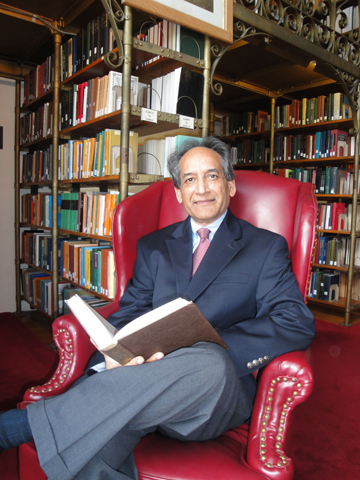
Historian and scholar Nasim Yousaf is a grandson of Allama Mashriqi and is based in the U.S. His extensive knowledge of India’s partition comes from exhaustive research as well as direct accounts from Mashriqi’s sons, daughters, and the Khaksars, all of whom were part of the freedom movement. His works have been published in renowned peer-reviewed publications and he has presented papers at well-known academic conferences in the U.S.
|
The Khaksar Movement Allama Mashriqi, a Nobel Prize nominee and graduate of the University of Cambridge, envisioned a world where peace, equality, and justice prevailed for all. Mashriqi was unhappy with the status quo under colonialism in India and formed the Khaksar Tehrik (also known as the Khaksar Movement) in 1930 in order liberate the people from British rule and realize his broader vision for the world. The Khaksar Tehrik’s core principles emphasized humility, brotherhood, service, and unity and were reflected throughout the movement. For example, the word “Khaksar” meant “like dust” and represented the self-sacrificing nature of its members. The official symbol of the movement was a belcha (shovel), which signified the dignity and power of labor and the leveling of society. And members wore a badge with the word Akhuwat (meaning brotherhood) to instill a sense of unity and love. The Khaksar Tehrik was open to individuals from all walks of like, regardless of gender, religion, class, color or creed. The Khaksars’ activities ranged from providing daily community service for all faiths to organizing demonstrations and marches and conducting mock wars and camps. The ultimate goal was to mobilize the Indian masses at a grassroots level in order to bring freedom to India. The Tehrik’s message resonated with the Indian masses, and throughout the 1930s and early 1940s, the Movement expanded rapidly all across India. The British felt threatened by the power of the Khaksar Tehrik and tried their utmost to suppress the Movement, including brutally massacring hundreds of Khaksars on March 19, 1940. Mashriqi and the Khaksars also endured imprisonment, torture, and threats to their lives and families. Despite the attempts to suppress the Movement, by 1946, the Khaksar Tehrik had grown to over five million uniformed Khaksars along with a large number of supporters. Mashriqi and the Khaksars continued to fight relentlessly, until British rule in India finally came to an end in 1947. |
Perspectives on Partition, Part 2
The Forces that Made Partition Inevitable
The social and political milieu that prevailed towards the end of the British rule in India was fraught with confusion and communal passions running high. Amidst rioting, carnage, and the upheaval of mass migrations, the ideal of a united India came apart. The following is Dr. UMA MAJMUDAR’s take on Nasim Yousaf’s contention (see preceding article) that the Indian leaders, including Gandhi, failed to prevent Partition because of their selfish agendas, or at least because of their lack of commitment to hold India as one nation.
By DR. UMA MAJMUDAR
Nasim Yousaf’s article on his grandfather Allama Mashriqi’s role in India’s independence history offers a highly informative and thought provoking perspective. If not for this article, I, among others, would have remained unaware about this unsung hero, a passionate freedom fighter who risked his own life to oppose the partition of India. It is an account that intrigued and fascinated me, even as it evoked anger, frustration, and pain, as if an old wound had been reopened, or perhaps, which had never completely healed!
With due respect to the sacrifices made by this great patriot, and Nasim Yousaf’s thorough scholarship, here is my own perspective on the events that led to Partition.
To talk about the partition of India is like stirring a hornet’s nest! Historians, journalists, political pundits, and scholar-writers may come up with their own theories about why Partition happened, but consensus seems impossible to reach. The complex, maddening rush of events preceding Partition were so over-whelming, that despite all the sincere efforts of peace-loving and self-sacrificing leaders such as Allama Mashriqi, Abul Kalam Azad, Badshah Khan (‘Frontier Gandhi’), Jawaharlal Nehru, Sardar Patel, Mahatma Gandhi and others, the division of the country could not be avoided.
During the mid-1940s, political pressures within India and without—due to World War II—built up at meteoric speed. Inevitably, there were human errors of judgment, in addition to “the power hunger of a few leaders on both sides,” as Nasim Yousaf says.
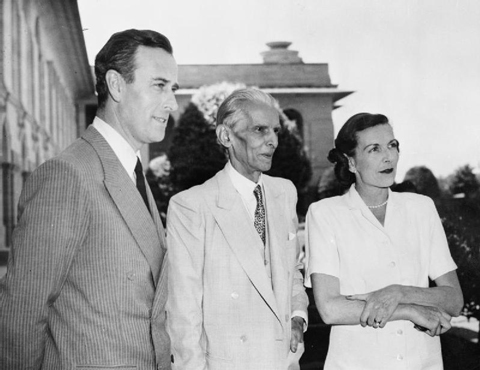
(Right) Muhammad Ali Jinnah with
Lord Mountbatten and his wife.
The British leaders—Churchill, Linlithgow, and Wavell—might not have initiated the division, but they certainly added fuel to the communal fire, turning it to their own political advantage. Besides facing the threat of World War II, the British also felt harassed by the Congress’s persistent demand for India’s freedom; the Congress leaders refused to support Britain in war until their demand for freedom was granted. On top of this pressure, Gandhi’s “Quit India” movement (1942) made the British shake in their boots! Pressed on all sides, the British turned to Muhammad Ali Jinnah and the Muslim League for their support in the war, but mainly to challenge the Congress claim of being the only majority party representing all Indians. All these unnerving pressures plus the raging violence between the Muslims and Hindus put the British in such a tight squeeze that they had no choice but to finally leave the country. They did not leave, however, without dividing the country into two.
Nasim Yousaf’s main contention is that the “All-India Muslim League and the Indian National Congress [including Mahatma Gandhi] were not willing to resolve the issues, or to work together, and Partition... was the result of the selfish politics of a few leaders.” My own view is at variance on this not so uncommon but erroneous allegation. As mentioned in Yousaf’s article, Mashriqi wrote a personal letter to Jinnah and Gandhi, requesting both of them to meet and resolve the issues peacefully. Gandhi immediately complied with this request and agreed to meet Jinnah. As mentioned in my book, Gandhi’s Pilgrimage of Faith: From Darkness to Light (2005, SUNY, p. 220), Gandhi met Jinnah early in 1939, and twice in 1944 to decide the fate of India.
|
|
|
| Gandhi, a man of heart, with Jinnah, an intellectual. | Jawaharlal Nehru, Lord Mountbatten, and Jinnah. |
During these meetings, Gandhi would address Jinnah affectionately as “Brother Jinnah” or “Quaid-e-Azam,” whereas Jinnah would continue to address Gandhi formally as “Mr. Gandhi.” Gandhi urged Jinnah to work together to focus first on procuring India’s freedom from the British, and settle the Muslim-Hindu differences after independence. Jinnah adamantly opposed this, insisting on creating a new separate nation of Pakistan before and not after the British left. Jinnah also insisted on Gandhi proclaiming that the latter’s meeting with him (Jinnah) was not in his personal capacity but as a Hindu leader representing the Hindu Congress. Likewise, he demanded that Gandhi accept Jinnah as the uncontested leader of the Muslim community, speaking on behalf of the entire Muslim population of India. Since the principles of unity and freedom clashed, Gandhi declined to comply with these demands. The meeting failed.
There was another crucial aspect to their encounters that did not augur well for the unity of India. William Dalrymple, writing in The New Yorker, says that apart from their political differences, “at the center of the (breakdown) of the debates lies the personality of Jinnah, the man most responsible for the creation of Pakistan.” He also adds, “from Indian-nationalistic accounts, Jinnah appears as ‘the villain of the story’; for Pakistanis, he is the Father of their Nation.”
Unquestionably, Jinnah and Gandhi were poles apart, not only in their views about the place of ‘religion in politics,’ but also in their demeanor, the way they dressed, spoke, lived, and mainly the way each conducted their human affairs. “The Westernized Jinnah was a non-religious Muslim with a sharp intellect, fierce political ambition, and remarkable oratorical skills. Gandhi was a deeply religious man of simple living, high thinking, humble at heart and manners, and broad in his sympathies. Jinnah detested Gandhi’s rural style, his “saintly politics” and most of all, his immense popularity...Gandhi knew this very well, but...he continued to believe in turning an enemy into a friend.” (based on Gandhi: A Study in Revolution by Geoffrey Ashe, 1968, p. 339).
Until 1920, Muhammad Ali Jinnah was with the Congress, but thereafter he parted ways, moving on to leadership of the All India Muslim League from 1939 and onwards. “Jinnah felt eclipsed by the rise of Gandhi and Nehru,” says Dalrymple, “ in a largely Hindu Congress dominated by Patel, Bose brothers, and others.” Driven by intense discontent, distrust, and what I perceive as an insatiable lust for power, Jinnah, once a loyal Congress member, moved away to forge a different path.
As far as Nehru and Patel were concerned, they were sick to the stomach of the unspeakable atrocities in Calcutta, Noakhali, Punjab, Bihar, and Bengal, traumatic events that scarred the country despite Gandhi’s desperate peace efforts and ‘fast unto death’ to prevent them. Besides, the endless caravan of Muslim and Hindu refugees, trying to flee from the murders, abductions, and forced conversions, created an unprecedented human crisis on both sides of the border. And it was this, an unending trail of tears and the bloody carnage that took its toll on Pandit Nehru and Sardar Patel, ‘the Iron Man of India.’ What a pity that these stalwart Congress leaders who were once so vehemently opposed to the partition of India had now to yield to what was becoming humanly impossible to withstand. As Nehru later acknowledged in 1960, “The truth is that we were tired men...we saw the fires burning the Punjab and heard everyday of killings. The plan for partition offered us a way out and we took it.” (Ian Talbot and G. Singh, Partition of India, 2009).
What about Gandhi’s role in keeping India undivided? Could he have prevented the partition, or prevailed over his Congress colleagues to not submit to Jinnah’s demand for Pakistan? To answer the first question, Gandhi undeniably played a pivotal role—which only he could have—to keep India united. Though without formal position or political power, Gandhi still prevailed over the hearts of millions of Indians, whether they were Hindus or Muslims.
Whatever Gandhi could do individually to keep the raging communal fires in control, he not only did but went far beyond human limits, putting his own life at stake for Hindu-Muslim unity and to keep India undivided. The solitary figure of the 77-year-old Mahatma, leaning on his stick and yet running faster than any young man through the jungles of Noakhali, Bihar, and Calcutta to establish peace among his warring countrymen inspired the poet laureate Tagore to write these lines:
Walk alone
If they answer not your call, walk alone;
If they turn away and desert you when
Crossing the wilderness,
O thou of evil luck,
Trample the thorns under thy tread,
And along the blood-lined track travel alone.
[Pyarelal, , Mahatma Gandhi -The Last Phase, 1966, Vol. 1, Book Two, p. 139)]
To sum up, the political impasse of the circumstances left no options, either for the then Indian leaders or for Gandhi, but to yield for the sake of peace and human dignity. On August 15, 1947, at the stroke of midnight, India became a free nation. Pakistan—a new separate nation for the Muslims—was born on August 14, 1947. The fight was over. The British left. India got independence and so did Pakistan. No one, however, was happy; neither the Indians, nor the Pakistanis – hundreds of thousands were being massacred while over 11 million were uprooted from their homes, and had to make the fearful track across the border.
But the unhappiest of all was Mahatma Gandhi, the Father of the Nation. His heart was broken. This was not the India of his dreams! When ordinary Indians, delirious with joy, were celebrating their independence across the country, Bapu was mourning the death of a united India. What he had dreaded, the vivisection of his motherland, had come true. To him, Partition was a spiritual tragedy and the freedom of India, a hollow victory.
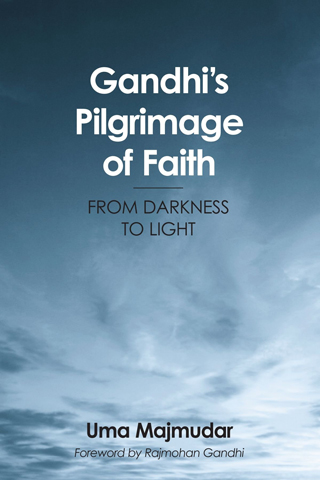
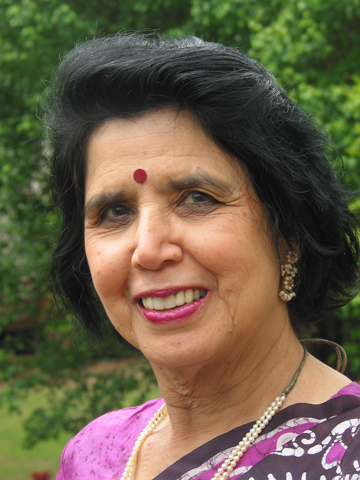
Dr. Uma Majmudar served as an Adjunct Professor in Emory University’s Department of Religion, currently teaches at Spelman College in the Department of Philosophy and Religion, and is the author of Gandhi’s Pilgrimage of Faith: From Darkness to Light, published by SUNY Press in 2005. Her next book, Gandhi and Rajchandra: The Making of the Mahatma is due for publication early next year.
Enjoyed reading Khabar magazine? Subscribe to Khabar and get a full digital copy of this Indian-American community magazine.
blog comments powered by Disqus




